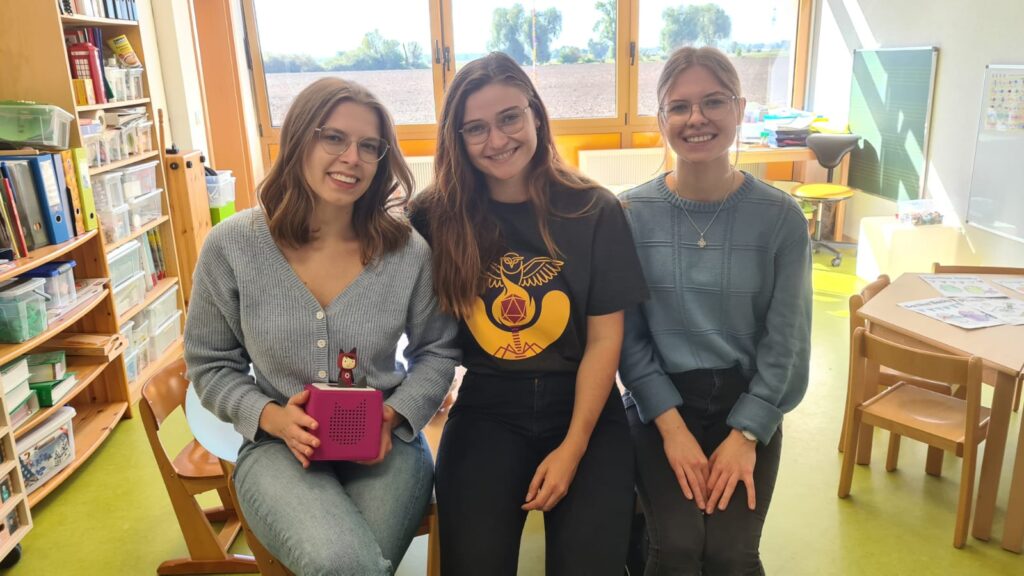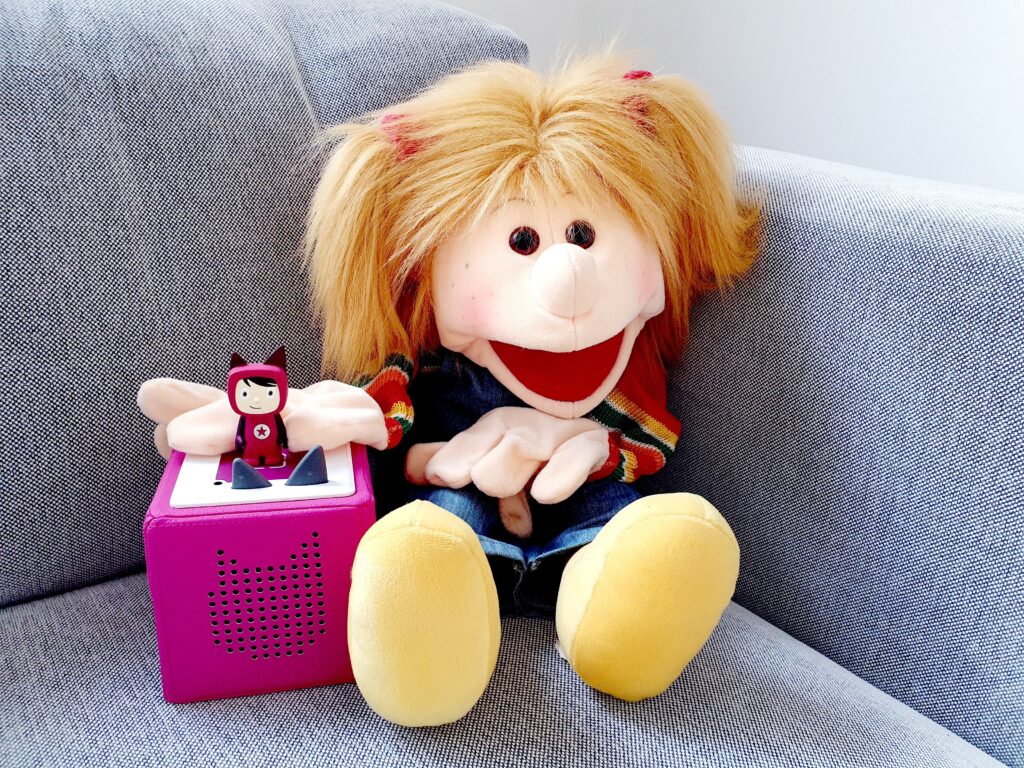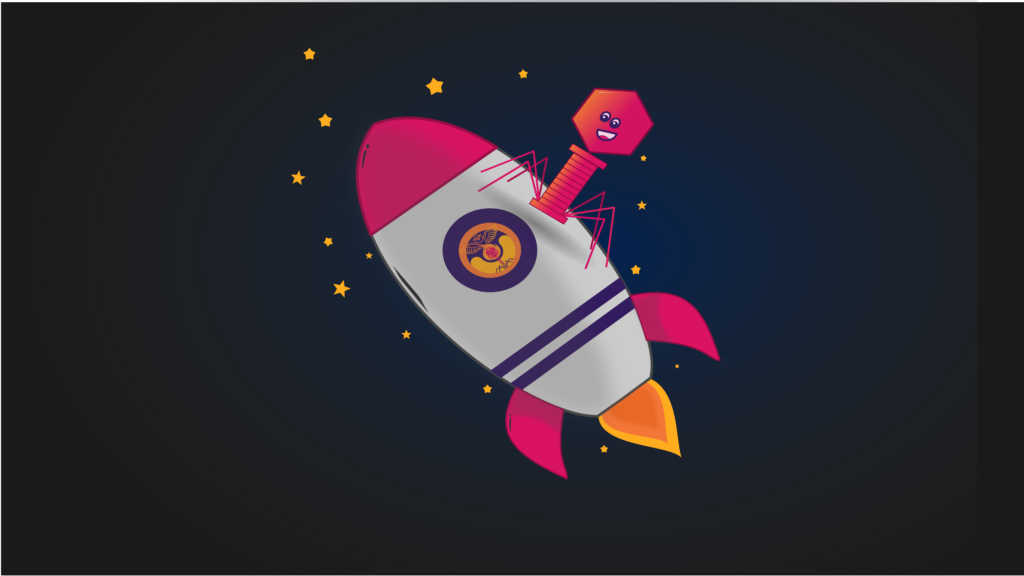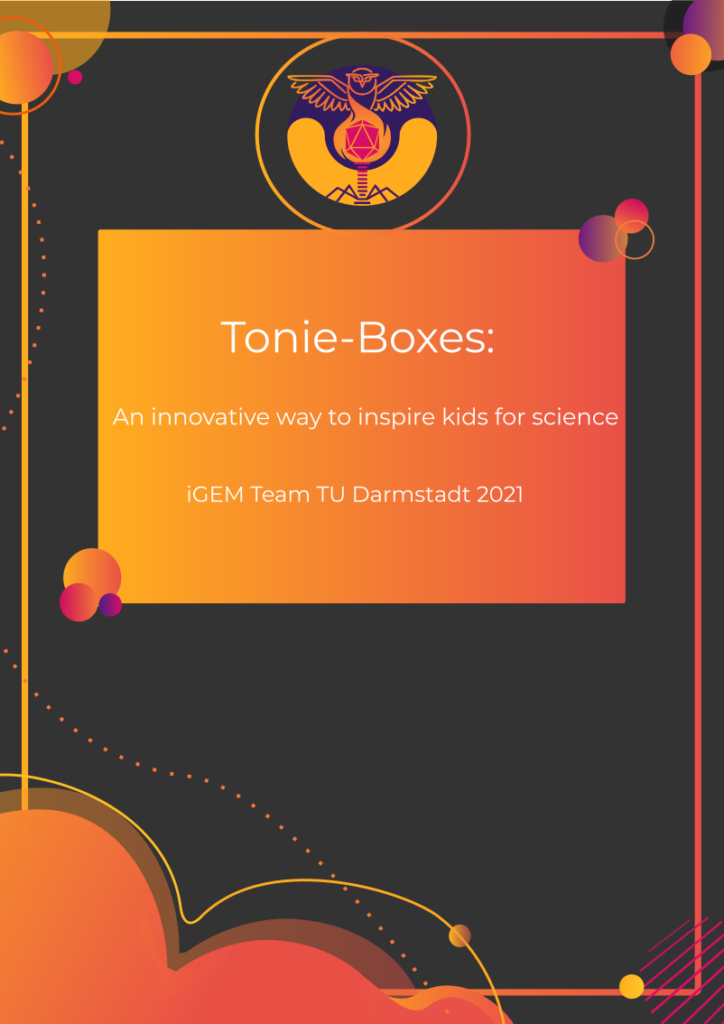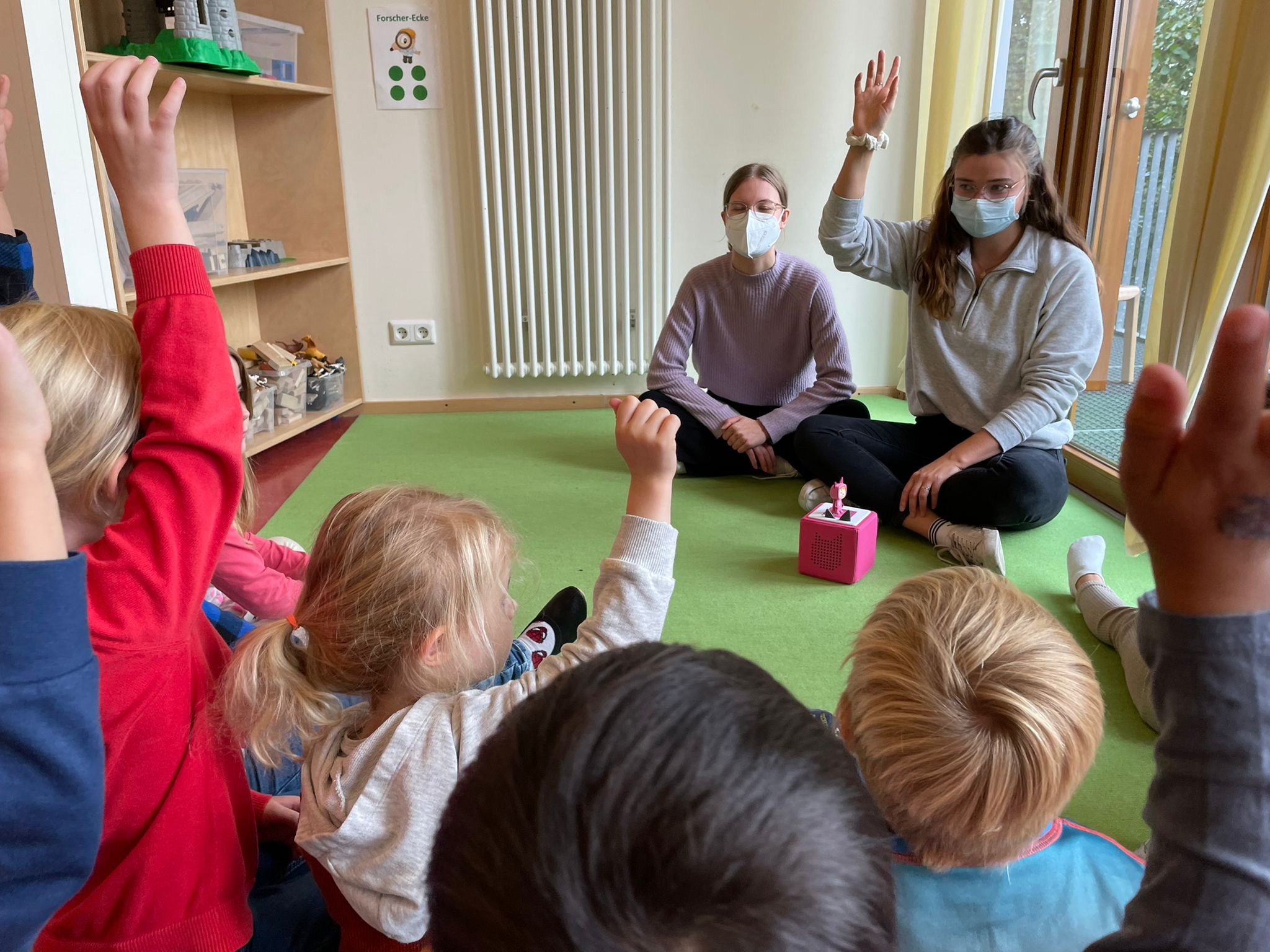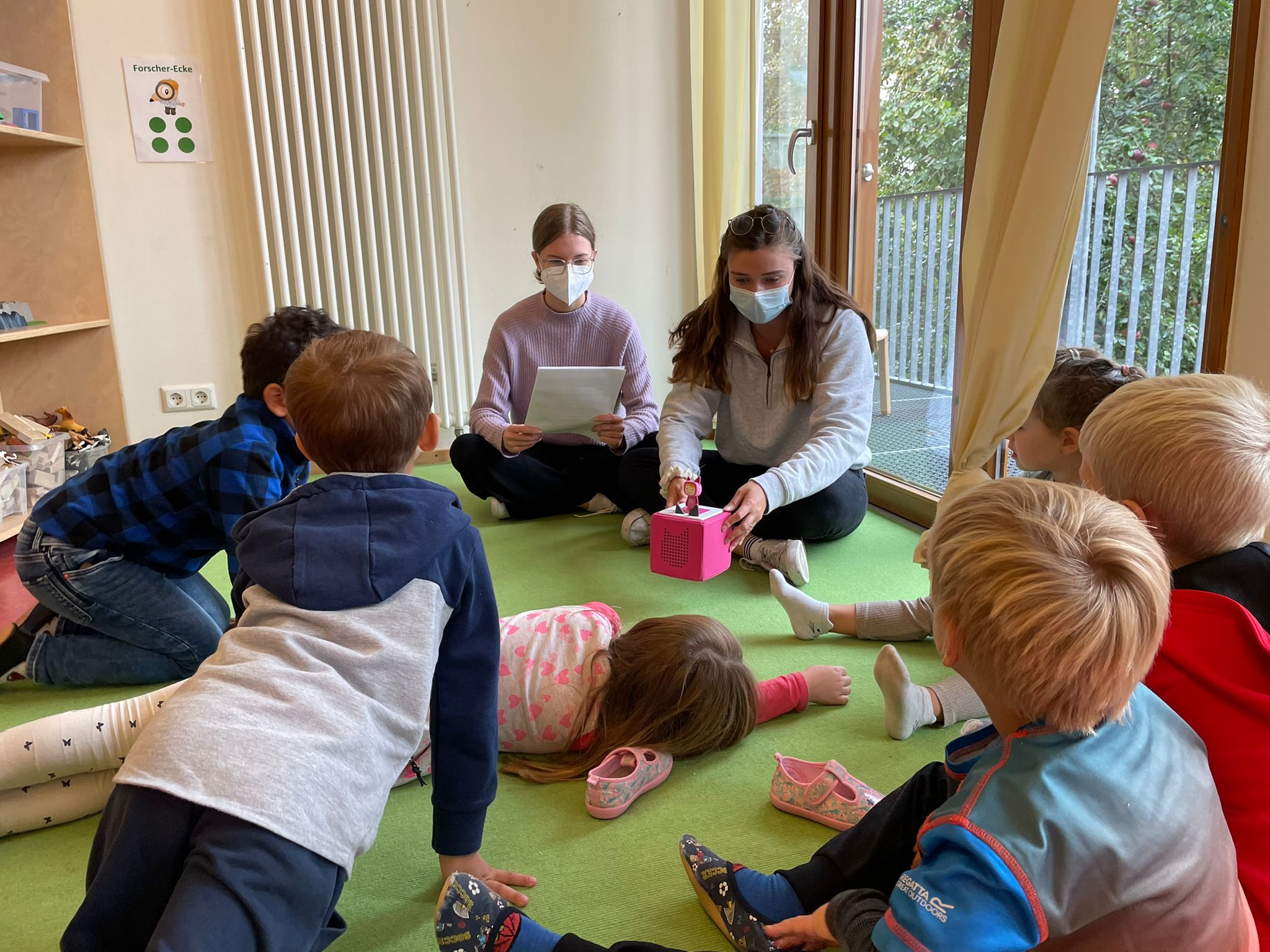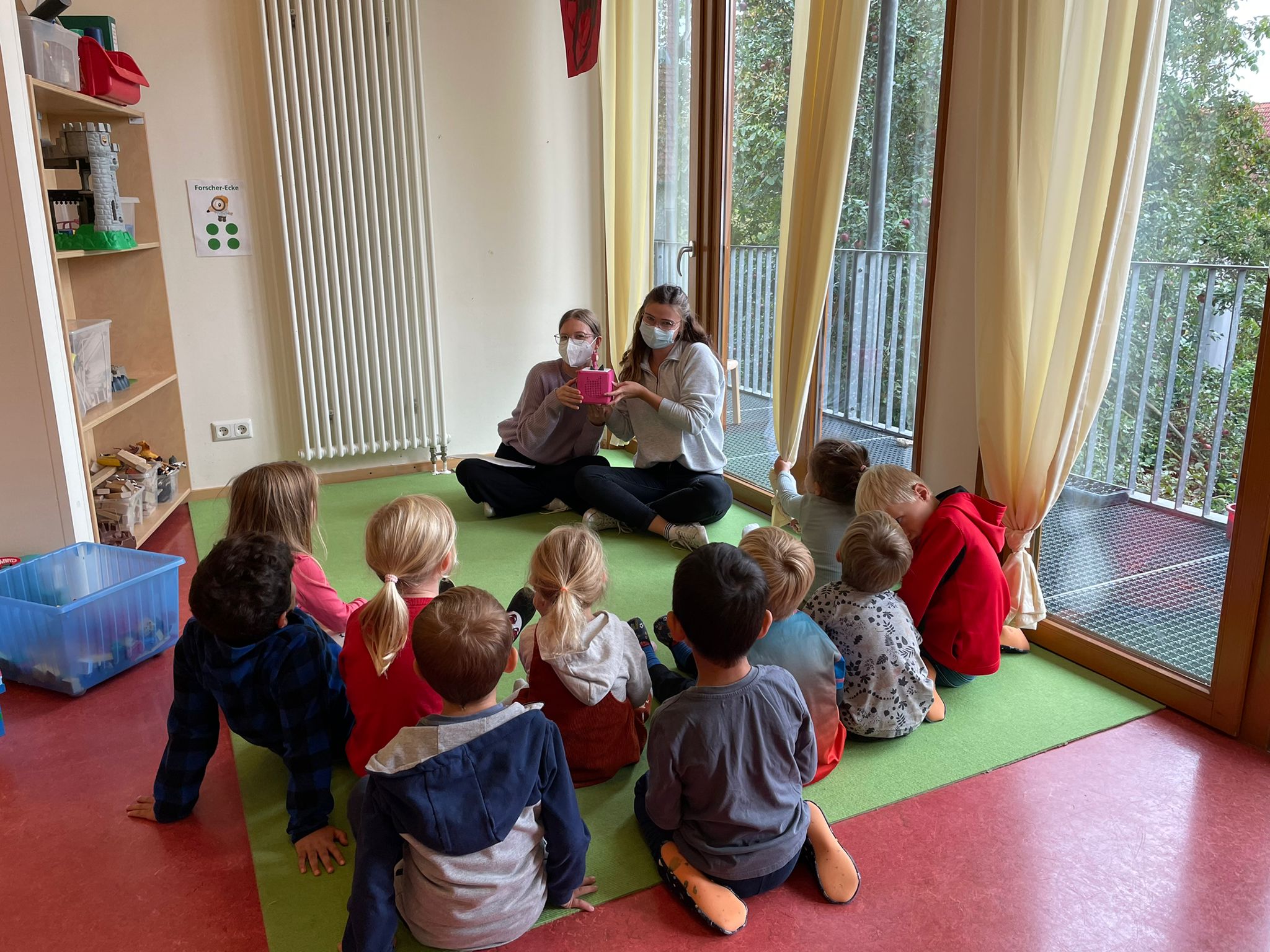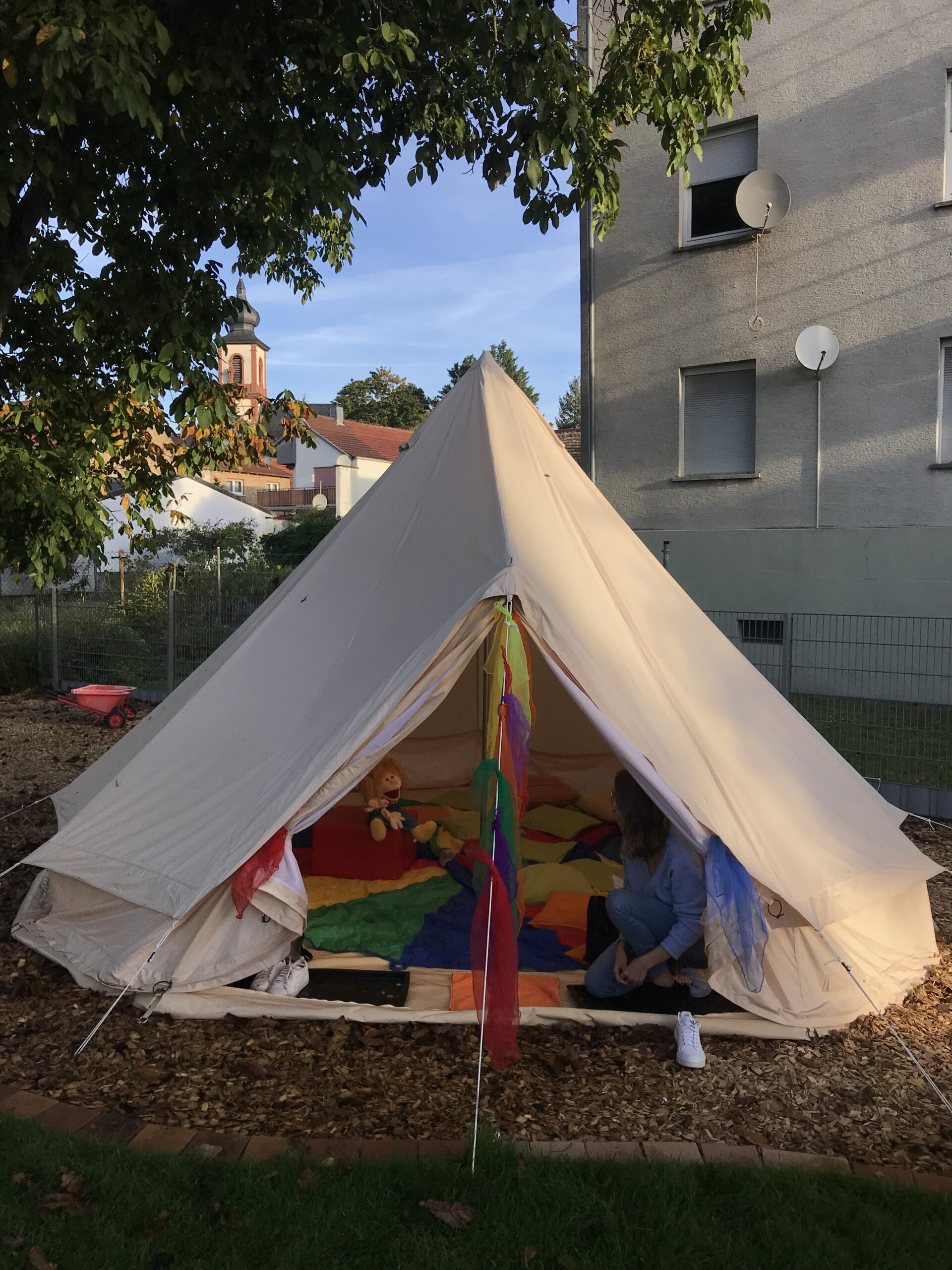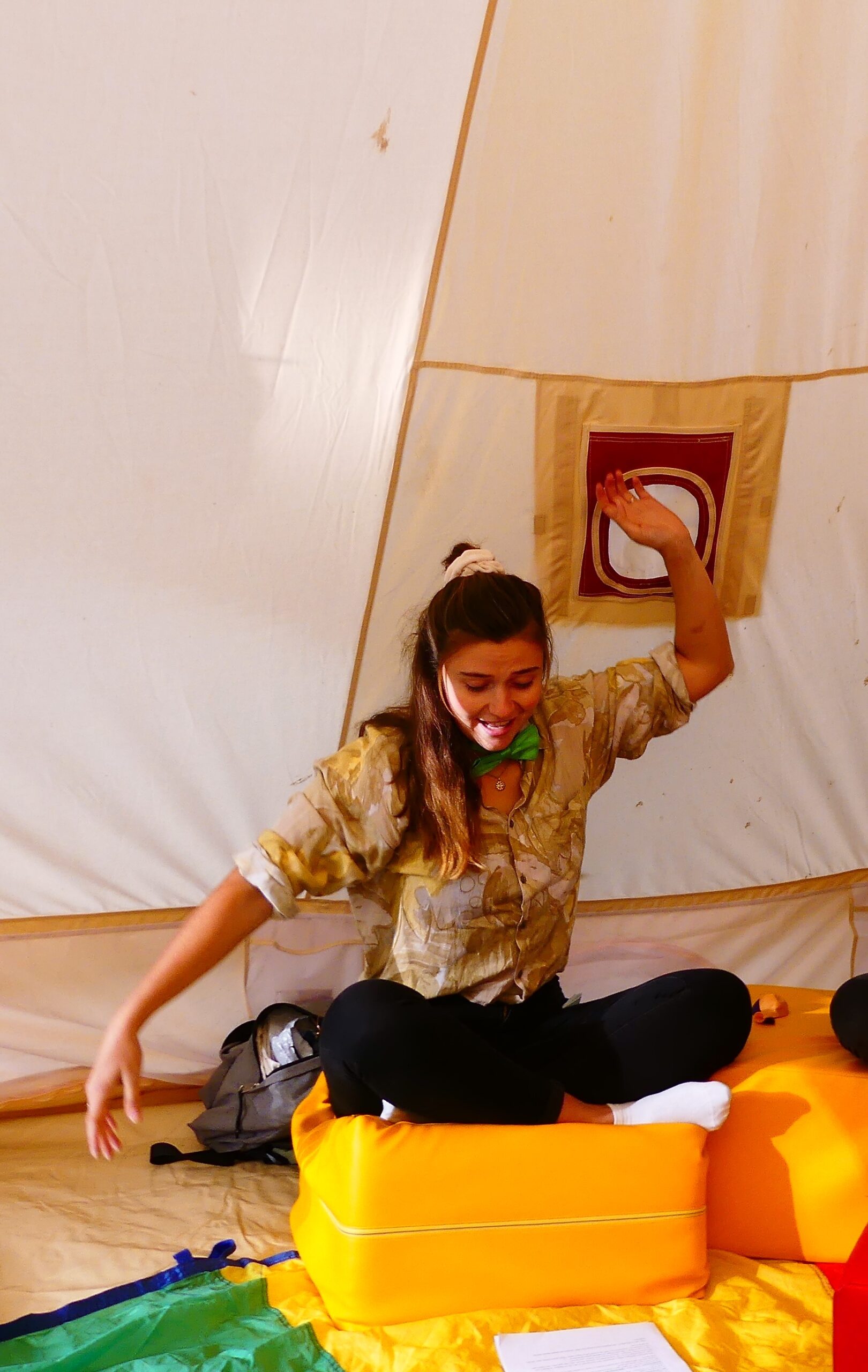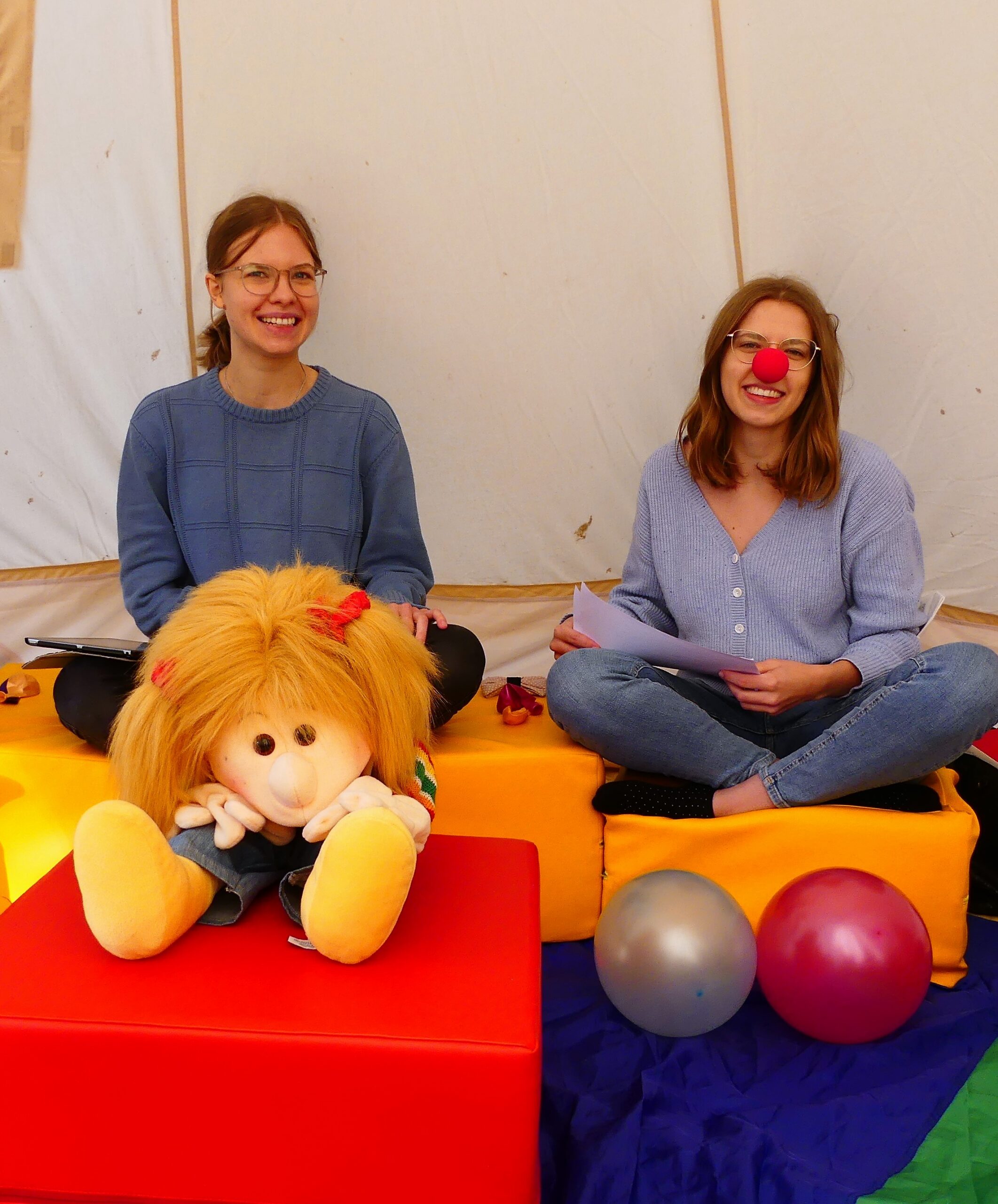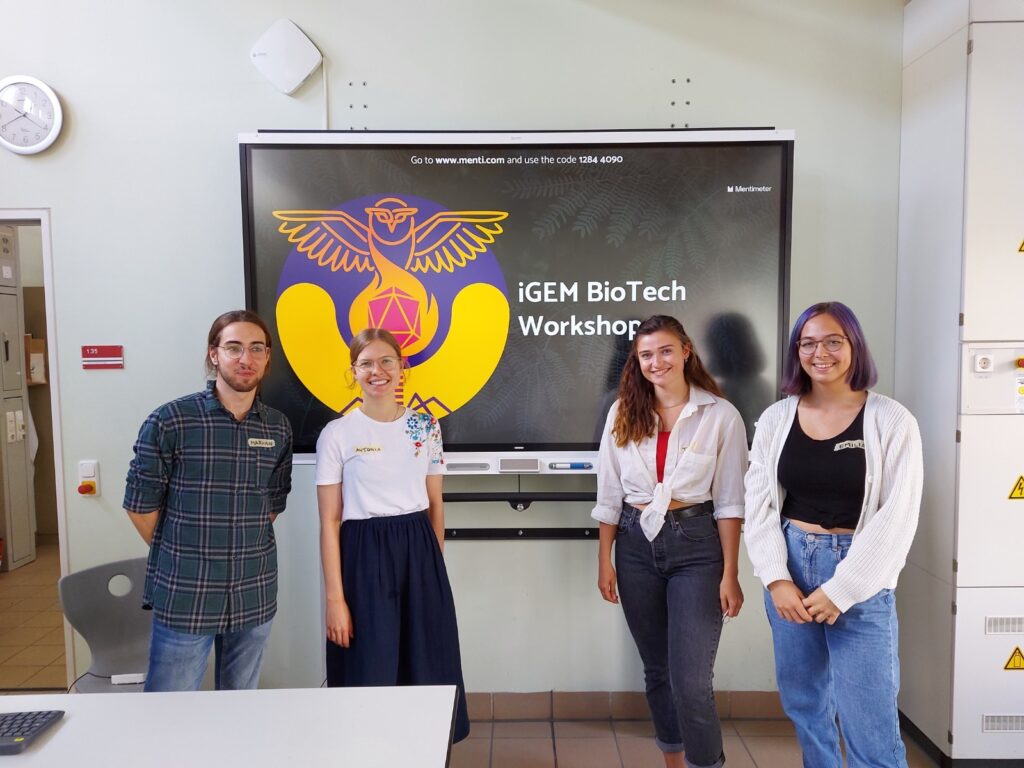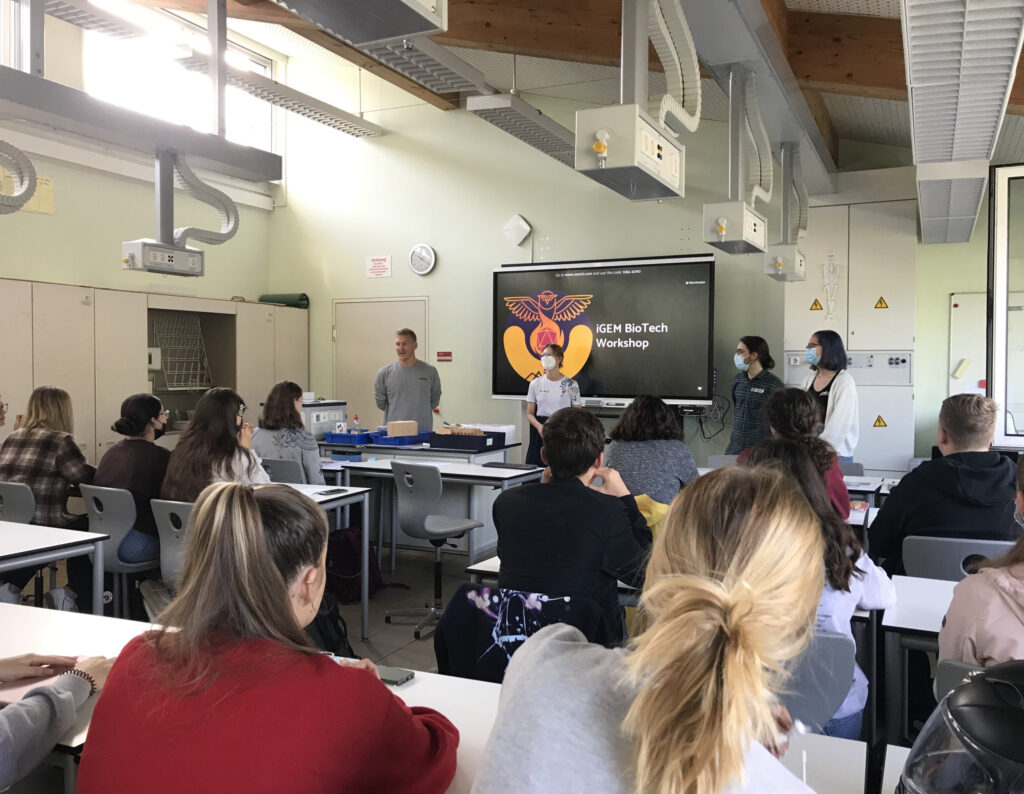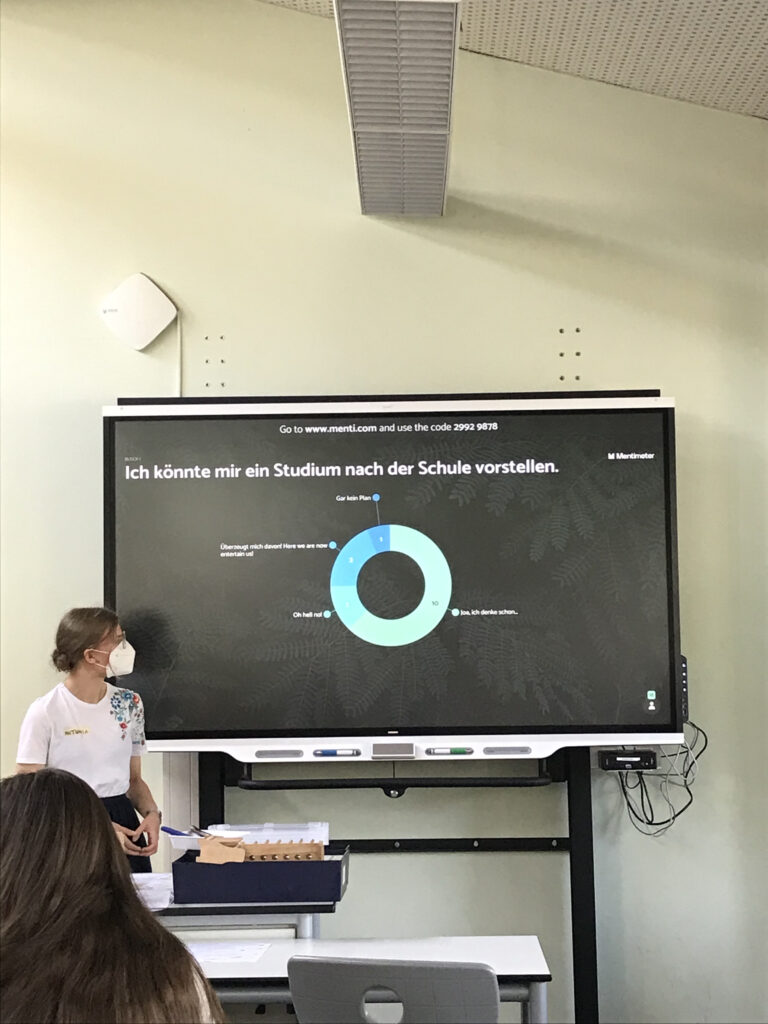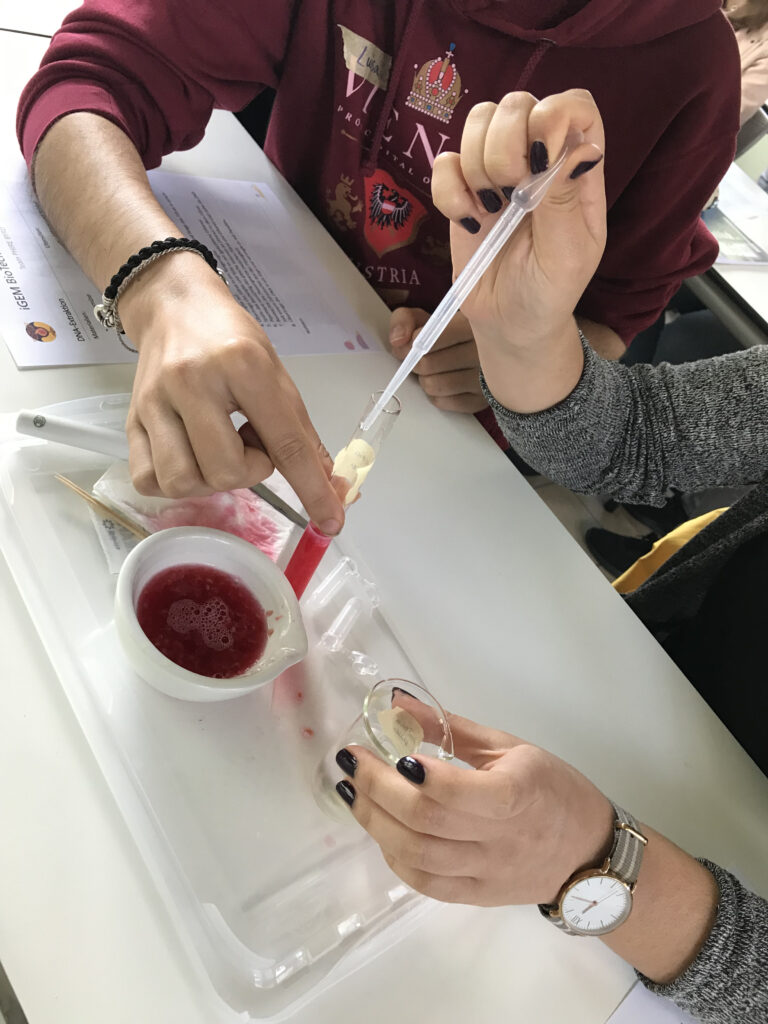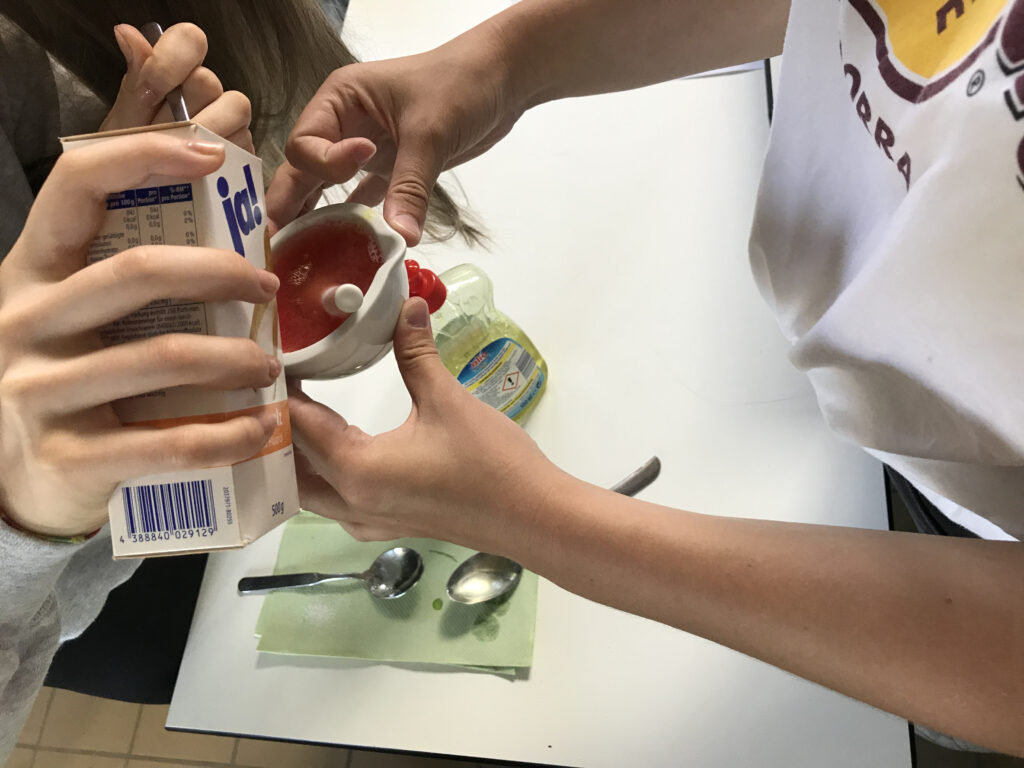Science Birds Workshop
We had the opportunity to experience a lot about science communication during a workshop organized by Science Birds – an initiative that organizes myriads of science communication events. The workshop’s purpose was to give us as young scientists some tools, tips and tricks in order to make us better ambassadors of our research. Furthermore, it taught us to build bridges with people from different backgrounds, leaving this way the science bubble, so that science can be made accessible and useful to everybody.
We discussed with Dr. Sascha Vogel about the necessity of communicating science and analyzed key methods to attractively display science to different audiences. We reflected about the fact that the most important thing in the field of communication is saying “yes”. We learned that it is important to be open for any opportunity we get to do what we are passionate about and to be flexible in the way we make science. We further realized that we should not fear to make mistakes as well as not get discouraged by different challenges.
We definitely experienced a lot about ourselves in this workshop. We became aware that a good scientist should be not only be able to reflect good research but even the proper science education and communication skills. This is optimally achieved through events like this or iGEM itself. As science is the key to the future not only scientists but everyone should be provided with this key, so that we can walk together toward a future, which is made better by science.
Education for Children
Tonie-Boxes
A big focus of our Human Practices this year was science education. Especially after the input of the science communication workshop we were motivated to spread science in a new and innovative way. That is why we decided to go for kindergarten kids as one of our age groups of choice. Most of the time, this age group is considered as too young and is thus not integrated in the field of science education. We believe that it is never too early to arouse interest in science among the younger generations and to make them familiar with it in a playful way.
We created a radio play for children aged three to six years to introduce them to science in a child-friendly way. Therefore, we have written and recorded two stories that cover scientific topics on a very simple level. To share our stories, we used “Tonie-Boxes”. These are currently very popular among young children. Tonie-Boxes are the new generation of CD players. Children can easily play the stories by placing a small figure called “Tonie” on the box, which contains the information of the stories. We have uploaded our stories to a total of five Tonie-Boxes and distributed them to multiple kindergartens in our area. We also held reading sessions and prepared coloring pictures related to the main characters of our stories for the kids. The templates for download are attached below. Further information to the reading lessons can be found below. The stories are also uploaded on Spotify on our podcast “Genomenal”.
Our two stories are called: “Phage Phips on adventure trip” and “Bacillus Becky on the search for friends”. Phage Phips takes the children on a journey through the human body, discovering different locations such as heart and stomach, thereby meeting different bacteria. Bacillus Becky is looking for a suitable biofilm in which she can live. During her search she befriends a number of very different bacteria that each teach her and the children something about bacterial properties.
Through those stories scientific content is conveyed in a very comprehensible way. In addition to scientific aspects, central themes such as friendship and diversity are also addressed. In this way, positive social values can be indirectly conveyed and the children’s awareness of this can be indirectly strengthened as well. We also had the content of the stories approved by social pedagogue Stephanie Schultheis, who works in the child and youth welfare service.
In a newspaper article about our team, our radio plays were also mentioned. As a result, we received emails from parents who would like to share the stories with their children and their children’s kindergartens. This made us very happy, as our stories will thus reach even more children.
An instruction for Tonie-Boxes as well as some audio samples from the recorded plays in German can be found below.
To make it easier for future teams to adopt the concept of radio plays, we wrote a detailed guide on “Tonie-Boxes: An innovative way to inspire kids for science”. The guide, as well as the full written-out stories in English can be found here.
Reading Sessions
To increase interaction with the younger generation, we decided not only to record our stories on the Tonie-Boxes and donate them to kindergartens, but also to organize reading sessions in some of the kindergartens. We were able to hold two reading sessions in different kindergartens, each time presenting one of our stories. To make it easier for the children to follow the story, we dressed up as the characters with different accessories such as hair bows or hats. We also had small tools to visually support the content of the stories. For example, a balloon was used to make the functioning of the lungs understandable when this was explained in the story. We used various sound effects such as a heartbeat and music. To make the readings more interactive, we included multiple breaks in which we discussed the content of the story with the children. We had them recap what they had just listened to and asked questions. This allowed us to check which information stuck with the children and what excited them the most. Overall, we were surprised by the amount of information that the children were able to remember. The children showed great interest in the stories and were especially amazed by the Tonie-Boxes. The following slideshow shows pictures from the reading sessions in both kindergartens.
After reading and discussing the stories, we spent some more time with the children. They were able to color coloring pictures that we had prepared showing the heroes of our stories. Especially Phage Phips on his rocket was very popular with the children. Some of the finished coloring pictures can be seen in the following pictures. The templates for the coloring pictures can be downloaded here: Phage Phips and Bacillus Becky
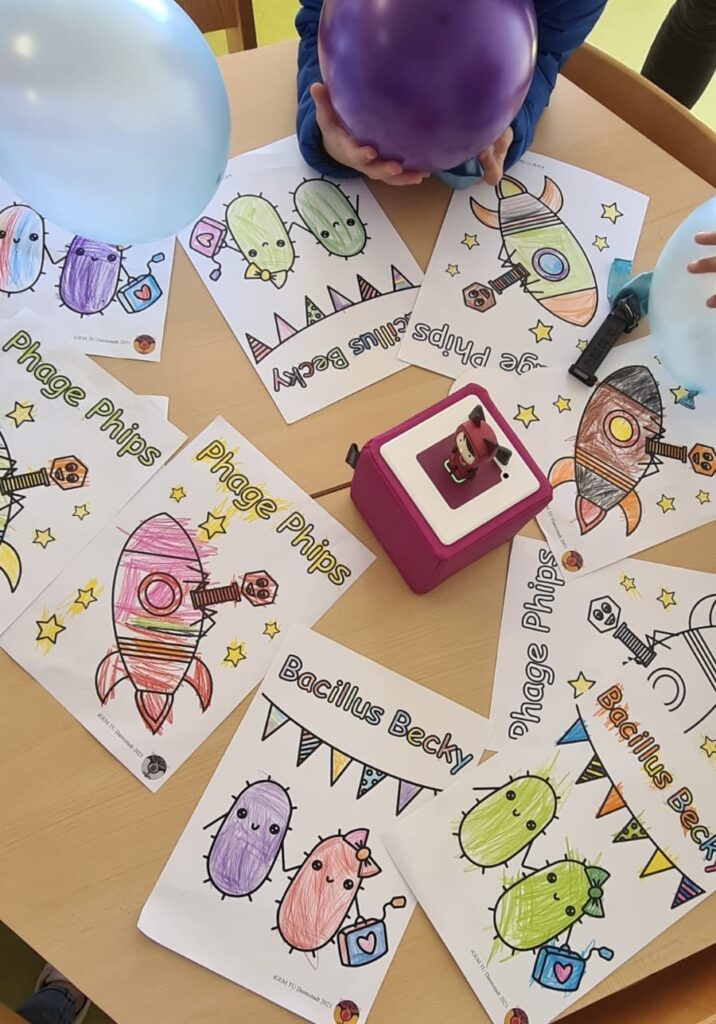
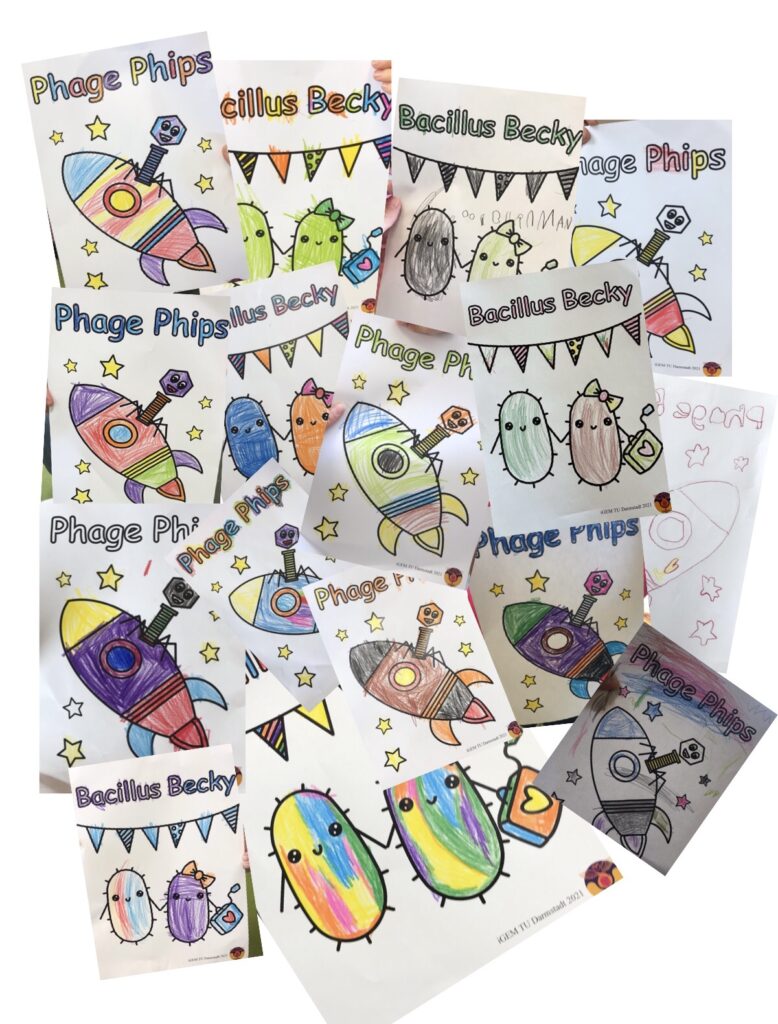
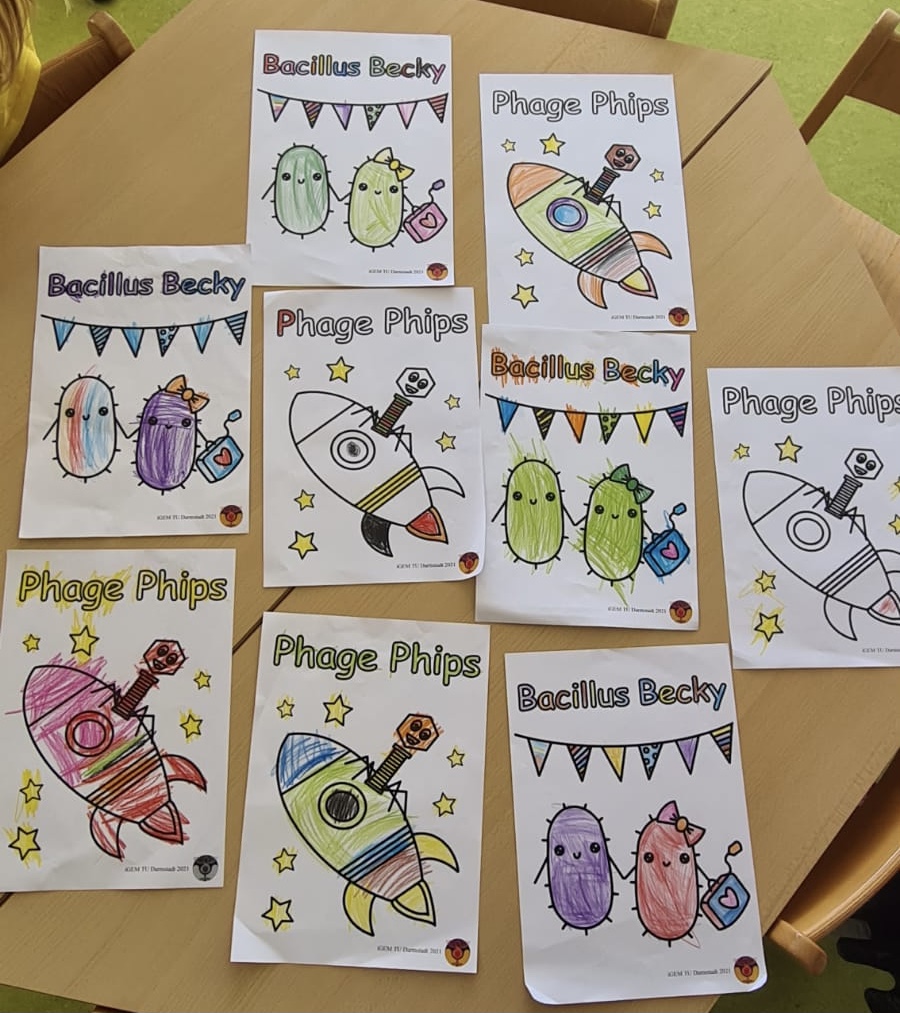
Additionally, we used the Tonie-Box to play some dance games, which was a lot of fun for us and the kids.
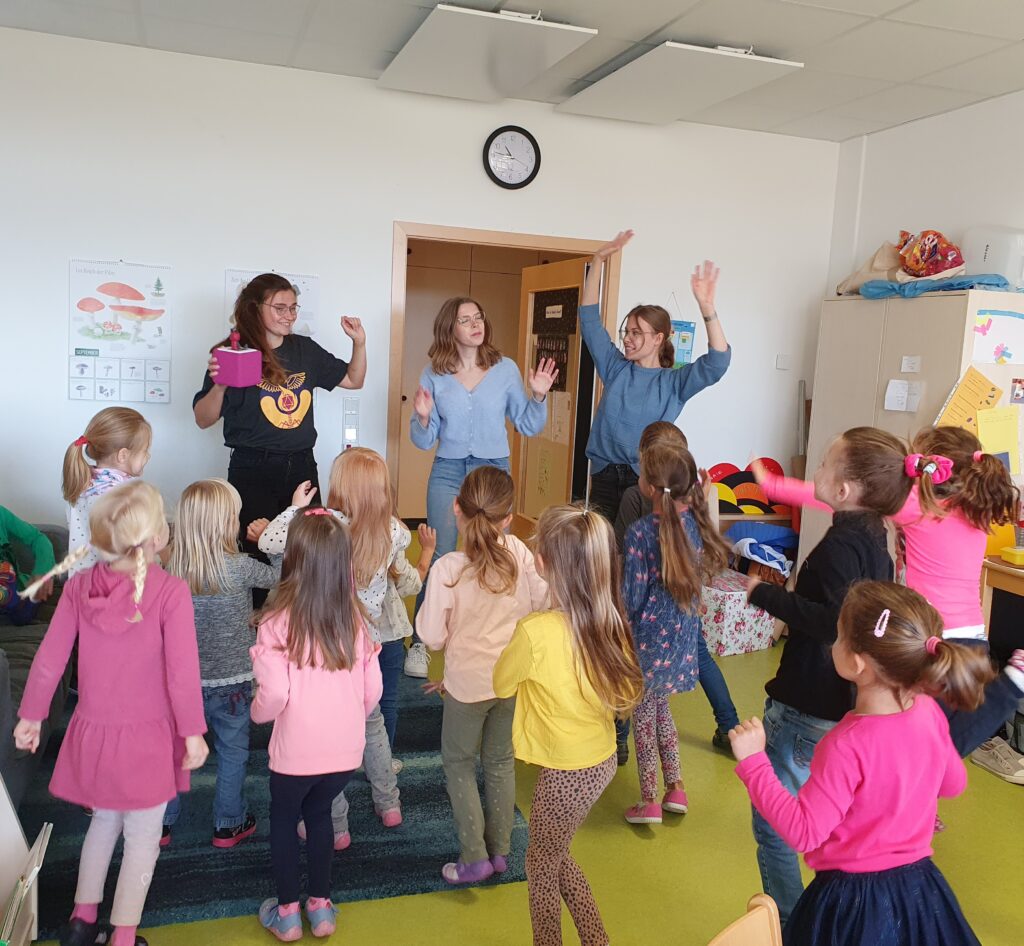
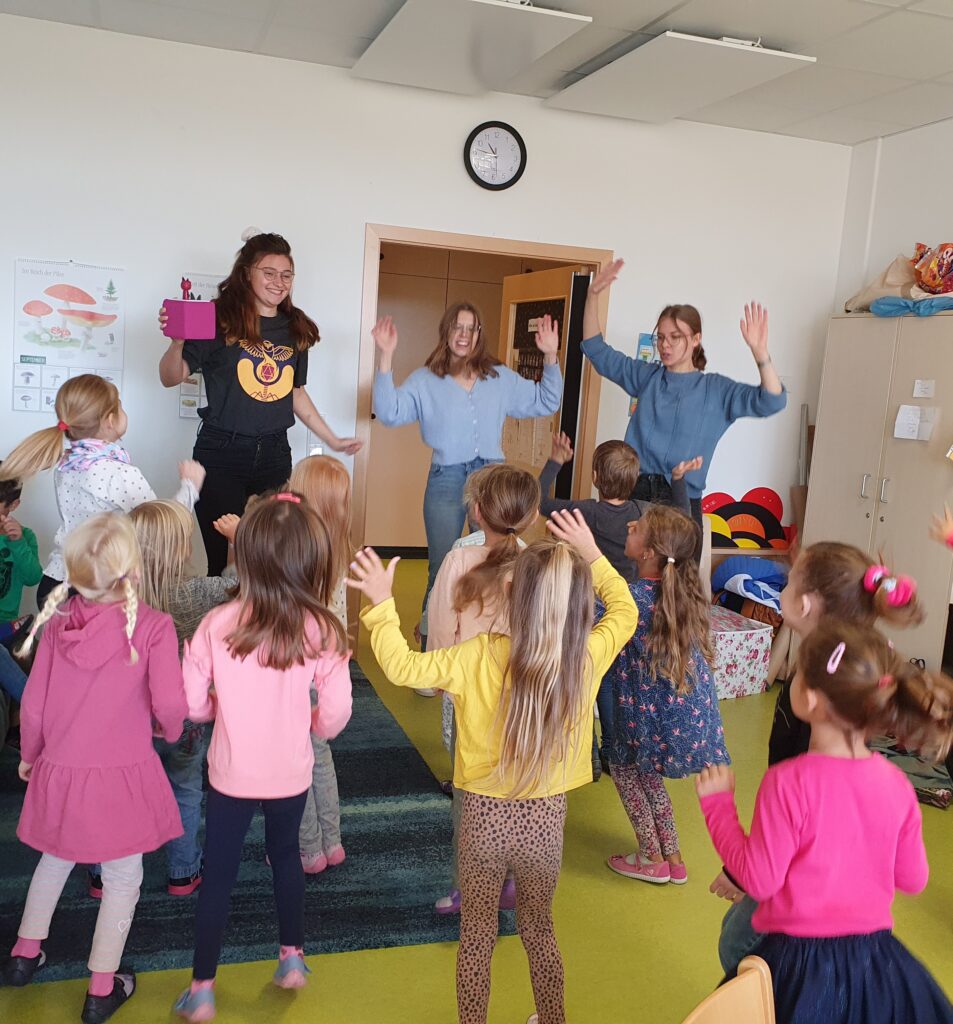
Before our visit to the kindergartens, we also got in touch with the German Federal Ministry of Education and Research. They donated goodies to us that we could give out to the children in addition to the Tonie-Boxes.
After both visits, we received very good feedback from both the children and the kindergarten teachers. The children had a special day with a lot of learnings. The kindergarten teachers told us that even children who normally find it difficult to pay attention for a long time, followed the story with great concentration and did not get distracted. This showed us that our stories were very suitable for the children and we managed to arouse their interest. After the reading, many children asked questions about the stories. They also proudly told us that they will take the coloring pictures home and tell their parents about our visit. This provides a good opportunity for the children to discuss the content of the stories again and perhaps encourages the children’s families to talk about science topics more often.
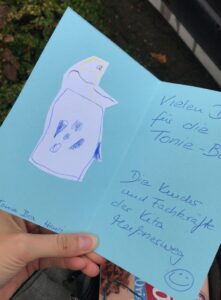
Additionally, after one kindergarten visit, a newspaper article was written about our project and a podcast was recorded by the kindergarten reporting on our visit. Both stated again how happy they were about the reading session and the Tonie-Box with our stories. A picture of the newspaper article and a few audio samples from the reading session that were part of the podcast can be found below.
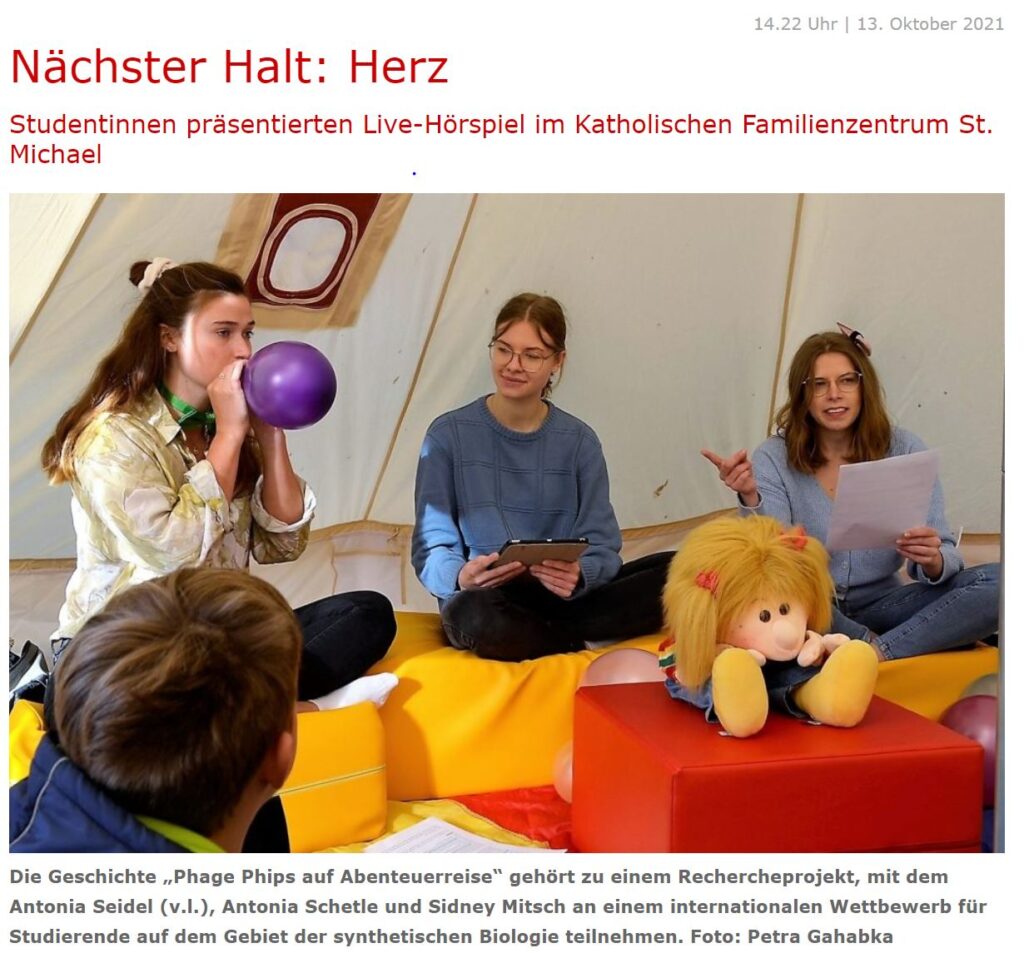
We are very satisfied with our visits and are sure that we made a positive impact in the field of science education. We would like to share our stories with more kindergartens to reach even more children and introduce them to science.
Education for High Schoolers
As another subproject, we prepared and held a workshop for high school students that are approaching graduation. Thereby, we wanted to introduce them to university in general, as well as encourage them to consider science as a field of study.
Our workshop was divided into three parts.
In the first part, we gave an overview of life as a university student, as well as our study fields: Biology, Biomolecular Engineering and Chemistry. We discussed the main differences between school and university as well as possible study and career opportunities the students have after their high school graduation. Thus, the students got insights into the topics from the point of view of university students themselves. We exchanged with the high school students about their expectations and preferences regarding their future studies. They took the opportunity to ask many questions which may help them decide whether a degree in science is something to consider for them.
The second part of our workshop was a practical part. We let the students isolate DNA from different fruits. They had to plan the experiment themselves before carrying it out. Thereby, the students were introduced to scientific work including the theoretical and the practical part of it.
Lastly, we discussed biotechnology in general with the students. This included prominent examples of biotechnological applications and of course our iGEM project. The students were fascinated of what is possible to achieve with synthetic biology and took great interest in our project.
After the workshop, the students had the opportunity to anonymously give feedback. The feedback we got was very positive and the students reported that they had a lot of fun and learned a lot. Moreover, some of them wrote that our workshop did indeed encourage them to consider applying to a university after school. This was a great and encouraging achievement for us. The students also wrote a report about the workshop for their school website (external). In it, they again gave a lot of positive feedback.
Photos from the workshop are shown below.
Science Slam
As part of our Responsible Research and Innovation (RRI) concept we wanted to connect the public with science. In order to do so, we have decided to organize a science slam. Science must not only stay in laboratories, research facilities or lecture halls. Science becomes interesting when it touches the broader society and reaches public engagement. A Science Slam provides a platform for slammers to share the passion for their project with more than just their fellow researchers and helps to popularize their field.
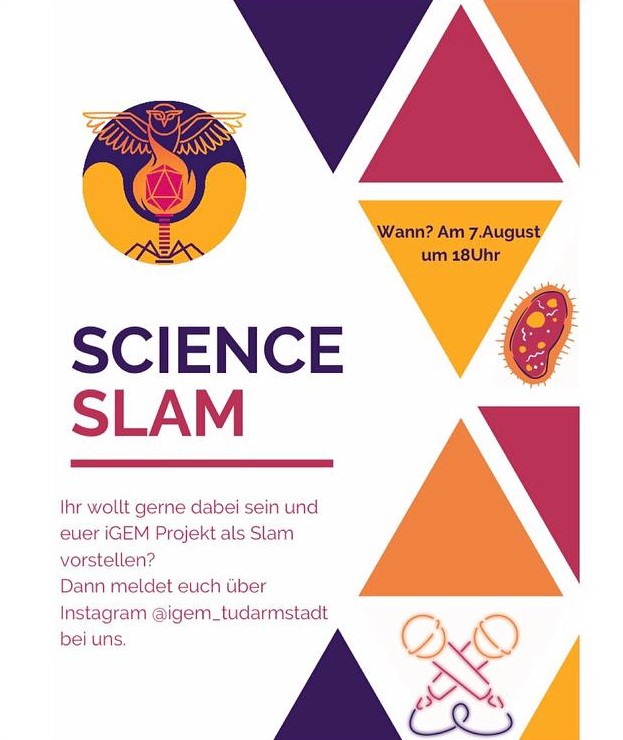
The idea to host a science slam emerged out of a science communication workshop we had with Dr. Sascha Vogel, passionate science communicator and in Germany well-known and successful science slammer.
We planned to host a virtual science slam for German speaking iGEM Teams and provide a stage for presenting their respective research projects in 5‑10 minutes. The greater goal should be not just to get feedback from other iGEM Teams, but to also get in touch with the public. This should be achieved by inviting people from outside the field of synthetic biology as well as streaming the event for additional reach.
Unfortunately, the event could not take place due to a lack of participation. We have drawn following lessons out of this:
- Poor choice of date
The first week of August is shortly after the time for exams at German universities. Therefore, the pressure on the teams might have been too high. - Insufficient lead time
The invitation to our slam was sent out one month in advance, which could have been to late for other teams to coordinate with their own team-intern schedule. - Lack of prior knowledge
It is possible that the other teams were hesitant, because they did not have a workshop on science communication and on how to write and later perform a science slam. For the next time, it could be useful to open up the science communication workshop for other teams too.
If you are interested in science slams take a look at the event iGEM Bonn hosted in 2016 (external). They invited several established scientists for slamming. Our initial plan was to differentiate from this approach and provide a stage for young upcoming scientist rather than established ones. But no matter which approach is taken, what is most important is to reach out to the public and get them in contact with science!
Podcast
With our podcast, named Genomenal, wanted to educate those who have no to little knowledge in science, but at the same time we wanted to share information with people with scientific background.
We decided to keep our episodes brief and articulate as clear as possible, whilst filling them with plentiful interesting facts. In order to make all information more comprehensible, we tried to avoid confusing terminology and professional vocabulary. The topics for each episode were chosen based on the personal interests of all speakers to imbue all episodes with a noticeable interest and the motivation of our team. All topics were based on the latest research outcomes in the world of natural sciences so that our audience would be up-to-date on the most recent changes in the world.

Who are we?
The first episode is a funny introduction of this year’s iGEM project. Here, we briefly explain what iGEM and synthetic biology are. We talk about previous iGEM projects and the motivation of our university to participate on this great competition every year since 2012.
Phages and phage therapy
After a bunch of information about viruses and their special definition we focus in particular on bacteriophages. Being viruses that attack and kill only bacteria there is nowadays raising interest in therapeutic usage of bacteriophages. Here, we give some insights on the pros and cons of phage therapy and additionally explain some key concepts of the phage’s life cycle.
Phage vaccines
Have you ever heard about cancer vaccines? Or, maybe, the prospect of using the phage based vaccines frighten you? The following episode gives listeners a general idea of how phage vaccines work. It will help in deeper understanding of the development of this method.
Bacteria in space
In this episode we had a special guests Angelina Yakubova and Vladyslava Kovtun, who kindly agreed to take part in our podcast. We dived not only into the biology that is applied in space, but also into the overall state of research in space.
Antibiotics
This episode was based on the knowledge and discovery of antibiotics. It focuses on antibiotic resistances and how they can harm human beings when they are not taken care of properly.
Biofilms
Biofilms are a characteristic of many bacteria. Here we introduce biofilms, their formation and how they are being integrated and modified in our project. The natural habitat of biofilms and their industrial use are also emphasized.
Our Podcast is also available on Spotify!
iGEM Meets INSPIRED
We wanted to address a broad part of society with our science communication. However, we think it is not only important to address people outside the STEM community but moreover scientists from other research fields. It is not self-evident that, e.g., engineering students are educated about biotechnology or even synthetic biology. This is especially significant because the world of SynBio is a very interdisciplinary field. Many scientists and engineers outside the biosciences play a major role in SynBio. This is also noticeable in various successful iGEM projects. Therefore, we have started a collaboration with INSPIRED (external) to specifically address engineering students.
INSPIRED is a program of Unite! (external) the European University Network for Innovation, Technology and Engineering. The program is all about interdisciplinary and international student collaborations. The aim is the creation of projects that link fields of space travel and synthetic biology. This year, the project’s goal was the development of an extraterrestrial greenhouse. Therefore, students of biosciences, material sciences and mechanical engineering formed teams that competed in a final event at which every team presented their work – just like in iGEM.
We organized an online crossover event where we introduced the students of INSPIRED to SynBio and its possibilities to shape the future. We emphasized the interdisciplinarity of the field and the possibilities of engineers and material scientists to get involved. Finally, we had an open discussion on the topic. We were amazed by the interest and the enthusiasm of the participants for SynBio and iGEM. During this discussion we could also gain valuable insights for our own interdisciplinary work: For example, how to organize our teamwork in a way that every member can contribute optimally or how to communicate complex SynBio subjects to experts from other fields of study
At the final INSPIRED event, the competing student teams presented the results of their work. We participated as iGEM Team in the audience and were impressed by the great projects and approaches for implementing synthetic biology in space travel.
In this collaboration, we were able to excite students from various fields about SynBio and spread the message of iGEM. Overall, we have been really happy to meet up with the INSPIRED people. We are very confident to see some faces again as motivated participants in iGEM 2022, striving to make the world a better place through synthetic biology!

Print Media
An important aspect of science is always to keep in touch with the public and to bring science, and more specifically our project, closer to as many people as possible. One way to do so is through print media. To reach out to different target groups, we published and got published via different channels:
- TNT magazine
The magazine is published annually by the chemistry student council of the TU Darmstadt – from students and for students in the field of chemistry and biomolecular engineering. We had the chance to present the fundamentals of the iGEM competition and moreover our Podcast Genomenal. This year’s issue of the magazine can be found here. - BIOspektrum
The magazine is published by the German Society for Biochemistry and Molecular Biology and is the best-selling journal for molecular biology in German-speaking countries. We had the honor to publish the article “Phagenproduktion in Bacillus subtilis gegen Pathogene” (Phage Production in Bacillus subtilis against Pathogens) in the 5th issue of 2021 which was released in September. The article can be found here. - Darmstädter Echo
The Darmstädter Echo is a regional newspaper for the city of Darmstadt and the adjacent districts. About 315.000 people read the newspaper on a daily basis, which makes it the perfect medium to reach out to the public and introduce our project to people outside the field of molecular biology. We like to thank Sabine Schiner, editor at the Darmstädter Echo, for her time interviewing us. The full article can be found here (external). - TIP Südhessen
The regional newspaper TIP Südhessen is published twice a week and reaches out to the approximately 62.000 citizens of Lampertheim, Bürstadt, Biblis and Groß-Rohrheim. Since the newspaper is distributed to the households free of charge, it makes it the perfect way to reach out to the general public, covering all social groups. We like to thank Petra Gahabka, editor at TIP-publishing, for writing about us. The full article can be found here (external).


